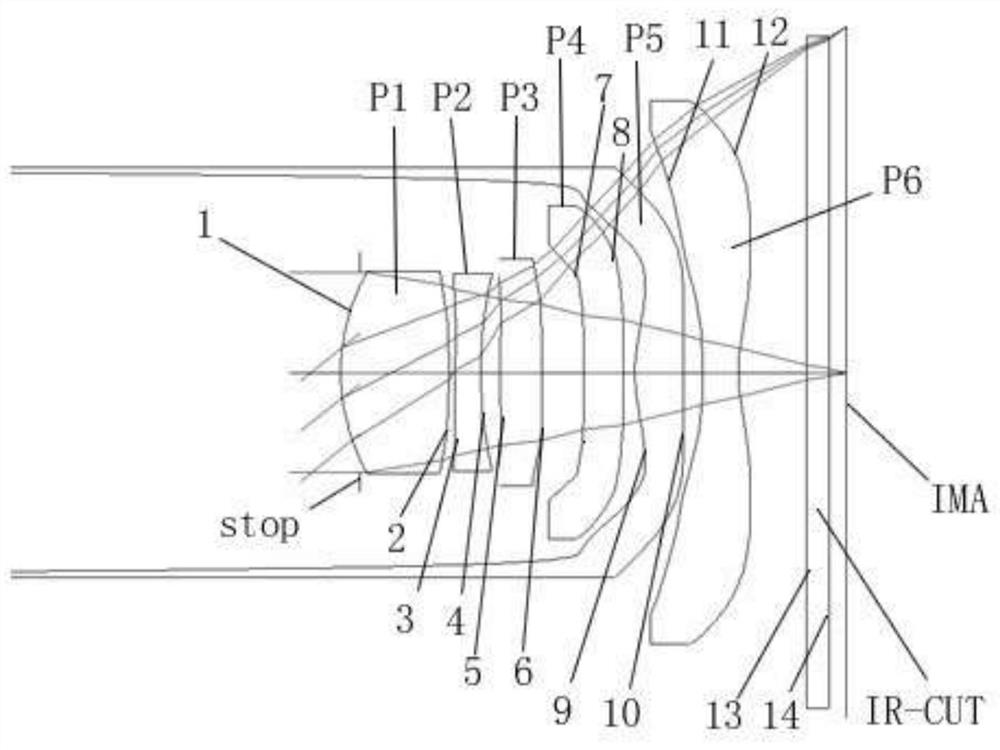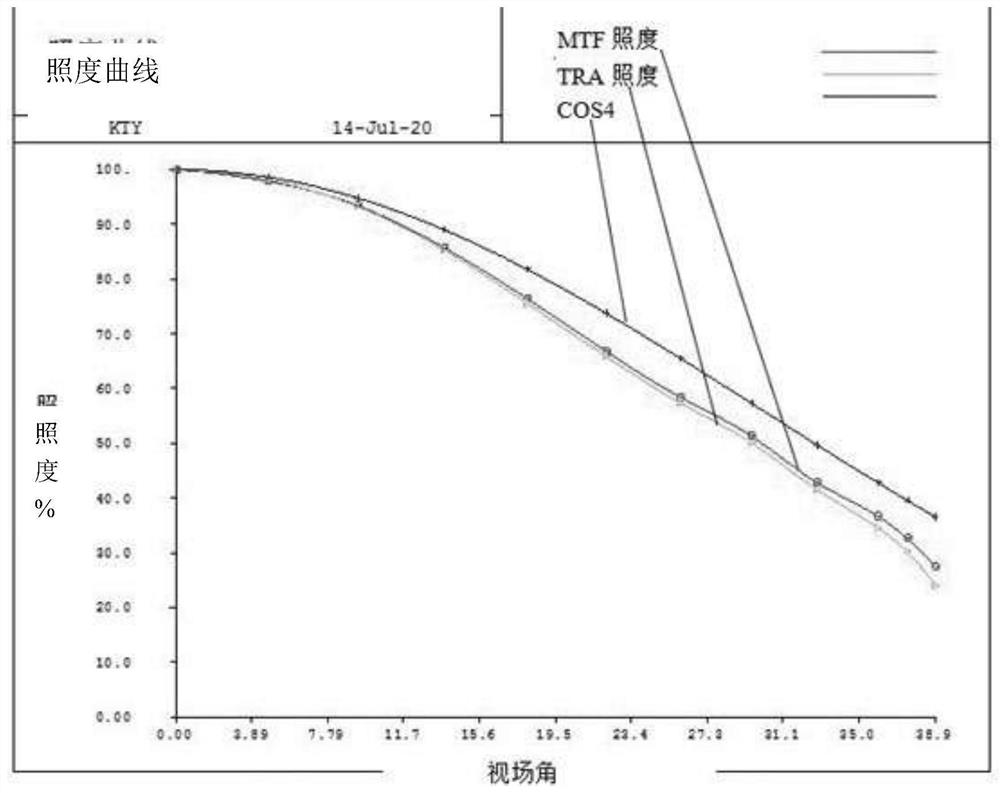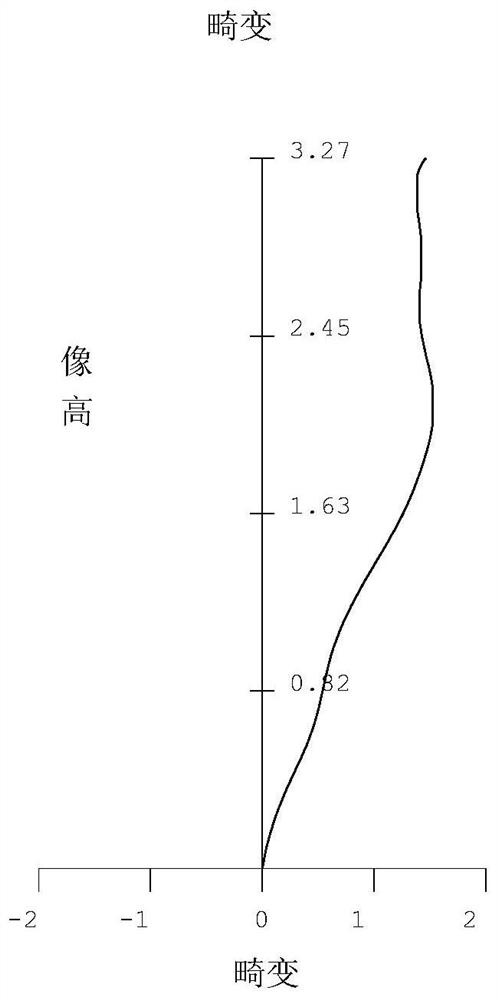Small-head large-aperture pick-up lens
A camera lens and aperture technology, which is applied in the field of optical systems, can solve problems such as lens performance degradation and impact on lens shooting quality, and achieve the effects of small aperture coefficient, reduced head size, and increased screen-to-body ratio
- Summary
- Abstract
- Description
- Claims
- Application Information
AI Technical Summary
Problems solved by technology
Method used
Image
Examples
Embodiment 1
[0054] Such as figure 1 As shown, the small-head and large-aperture camera lens includes sequentially from the object side to the image side along the optical axis: a first lens P1 with positive refractive power, a second lens P2 with negative refractive power, and a first lens P2 with positive refractive power. Three lenses P3, a fourth lens P4 with negative refractive power, a fifth lens P5 with positive refractive power, and a sixth lens P6 with negative refractive power. The diaphragm STOP is set on the object side of the first lens P1, and the incident light passes through the diaphragm Stop, each lens and the filter IR-CUT in sequence, and is finally imaged on the imaging plane IMA. Wherein, the object side and image side of the first lens are both convex surfaces, the second lens object side is convex, and the image side is concave, the object side of the third lens is convex, and the image side is concave, and the object side and image side of the fourth lens are both ...
Embodiment 2
[0083] Such as image 3 As shown, the small-head and large-aperture camera lens includes sequentially from the object side to the image side along the optical axis: a first lens P1 with positive refractive power, a second lens P2 with negative refractive power, and a first lens P2 with positive refractive power. Three lenses P3, a fourth lens P4 with negative refractive power, a fifth lens P5 with positive refractive power, and a sixth lens P6 with negative refractive power. The stop STOP is set on the object side of the first lens P1, and the incident light passes through the stop STOP, each lens and the filter IR-CUT in sequence, and is finally imaged on the imaging plane IMA. Wherein, the object side of the first lens is convex, the image side is concave, the object side of the second lens is convex, the image side is concave, the object side of the third lens is convex, and the image side is concave, and the object side and image side of the fourth lens are Both are conca...
Embodiment 3
[0098] Such as Figure 5 As shown, the small-head and large-aperture camera lens includes sequentially from the object side to the image side along the optical axis: a first lens P1 with positive refractive power, a second lens P2 with negative refractive power, and a first lens P2 with positive refractive power. Three lenses P3, a fourth lens P4 with negative refractive power, a fifth lens P5 with positive refractive power, and a sixth lens P6 with negative refractive power. The stop STOP is set on the object side of the first lens P1, and the incident light passes through the stop STOP, each lens and the filter IR-CUT in sequence, and is finally imaged on the imaging plane IMA. Wherein, the object side of the first lens is convex, the image side is concave, the object side of the second lens is convex, the image side is concave, the object side of the third lens is convex, and the image side is concave, and the object side and image side of the fourth lens are Both are conc...
PUM
 Login to View More
Login to View More Abstract
Description
Claims
Application Information
 Login to View More
Login to View More - R&D Engineer
- R&D Manager
- IP Professional
- Industry Leading Data Capabilities
- Powerful AI technology
- Patent DNA Extraction
Browse by: Latest US Patents, China's latest patents, Technical Efficacy Thesaurus, Application Domain, Technology Topic, Popular Technical Reports.
© 2024 PatSnap. All rights reserved.Legal|Privacy policy|Modern Slavery Act Transparency Statement|Sitemap|About US| Contact US: help@patsnap.com










